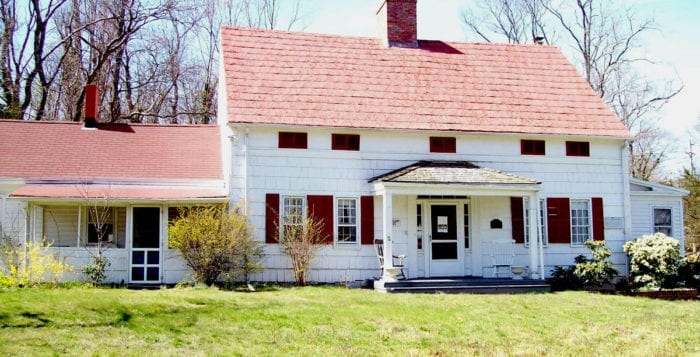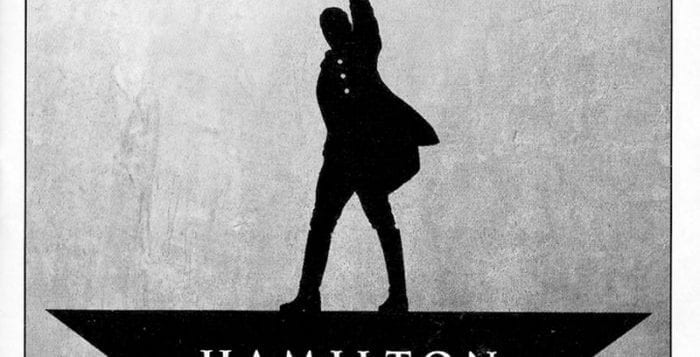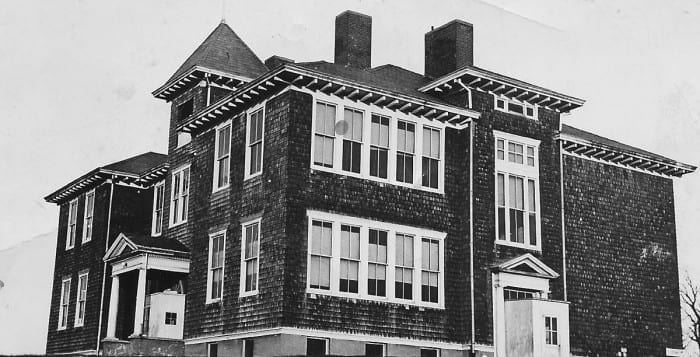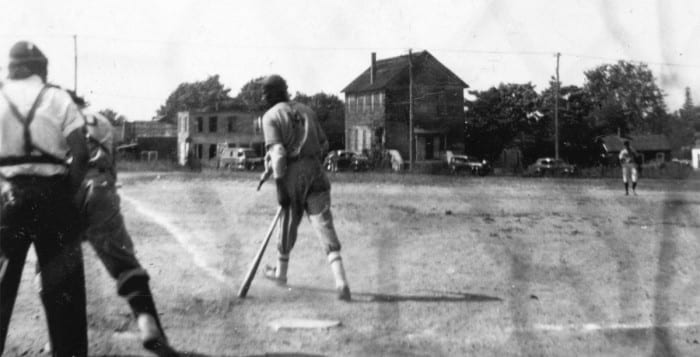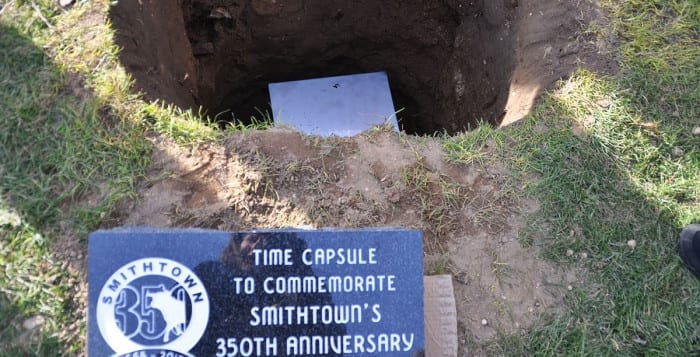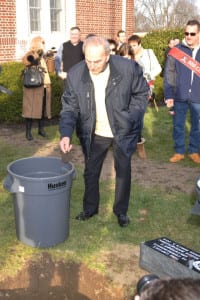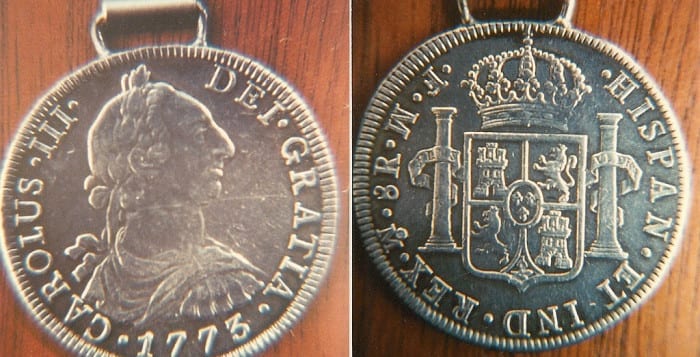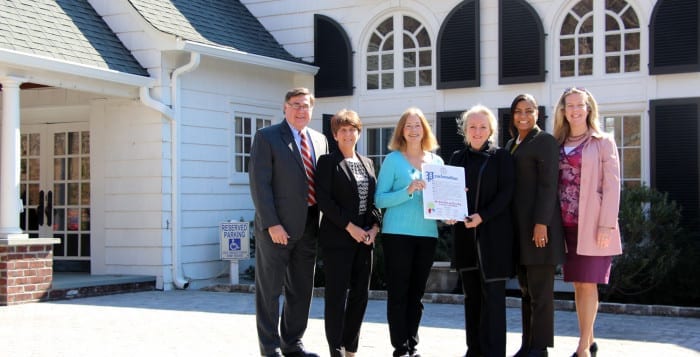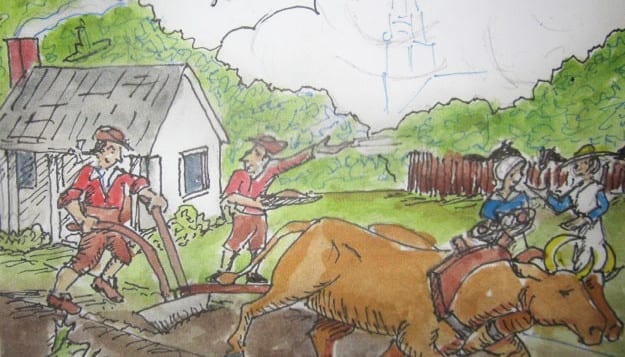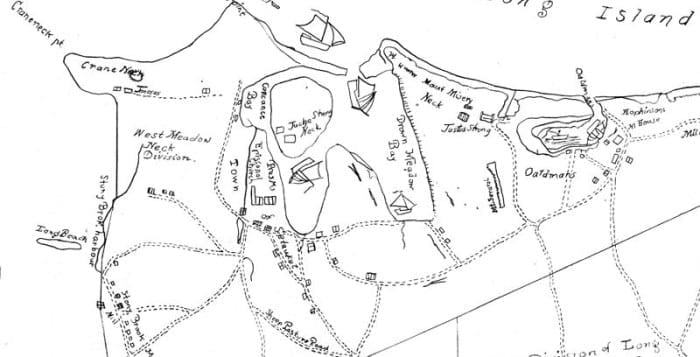By Erin Dueñas
The oldest house in Rocky Point has once again opened its doors to visitors, offering a peek at the history of the town spanning almost 300 years, during Saturday tours of the home, which acts as a museum run by the Rocky Point Historical Society. It’s the third season in a row that tours are being offered, according to society president Natalie Aurucci Stiefel.
Built in 1721 by Noah Hallock, a descendant of English settlers, the house has sat at the end of Hallock Landing Road mostly unchanged. It still has the original wood shingles and a red tin roof on the exterior. Inside, original wide-planked wooden floors creak underfoot, and a trap door in an upstairs hallway reveals a staircase that leads to rooms once used by slaves. Eight generations of Hallocks lived in the house over the centuries, including Noah Jr., William and Josiah Hallock, who all served in the Revolutionary War. The last Hallock to live there was Sylvester, who sold it in 1964 to the Via Cava family who owned it until 2011.
The Historical Society took ownership of the home in 2013 and turned it into a museum, showcasing a variety of household artifacts native to the home, including furniture, kitchen items and even toys once played with by Hallock children. Each room in the house is dedicated to a particular aspect of either the life of the Hallocks or the history of Rocky Point and the surrounding areas, including a room dedicated to farming, complete with antique tools and photos of the farms that once grew rye and raised dairy cattle nearby. The schoolhouse room offers a glimpse into what school was like for Hallock children and their contemporaries. Visitors can even walk around the block to the Hallock family cemetery where at least 40 Hallocks are buried, including Bethia, Noah’s wife, who died in 1766. Another room is dedicated to Rocky Point’s ties with radio history, including artifacts from RCA, which operated out of a transmitting station just down the road from the house off of Rocky Point-Yaphank Road.
Tours are conducted by trained docents such as Nancy Pav of Rocky Point, who was leading the tours on Saturday. Pav stressed the importance of preservation.
“If we don’t preserve old houses like this one, people will tear them down and build monstrous vinyl palaces,” Pav said. “We are preserving the history of a house that was in the same family from 1721 to the 1960s. It’s extremely unusual.”
Stiefel said that new artifacts on display this season include the wedding album of Sylvester Hallock and his second wife Josephine and photos of the now-abandoned Rocky Point drive-in movie theater.
Legislator Sarah Anker (D-Mount Sinai) praised the society for offering another season of tours, especially because of the awareness they promote.
“Rocky Point is a mecca of history and if it wasn’t for the volunteers, this history would not be preserved,” she said. “The tours help to pass down interest and advocacy. If there’s no one to take care of it, they will be lost forever.”
Stiefel refers to the Hallock house as a “precious gem” and added she is proud of the work the society’s volunteers do with the house tours. “They are very dedicated to Rocky Point’s history, which is fascinating,” she said. “We are so happy to share it with the community.”
The Noah Hallock house, located at 172 Hallock Landing Road, is opened for tours April through December, on Saturdays from 1 to 3 p.m. For group tours or more information, call 631-744-1778.

